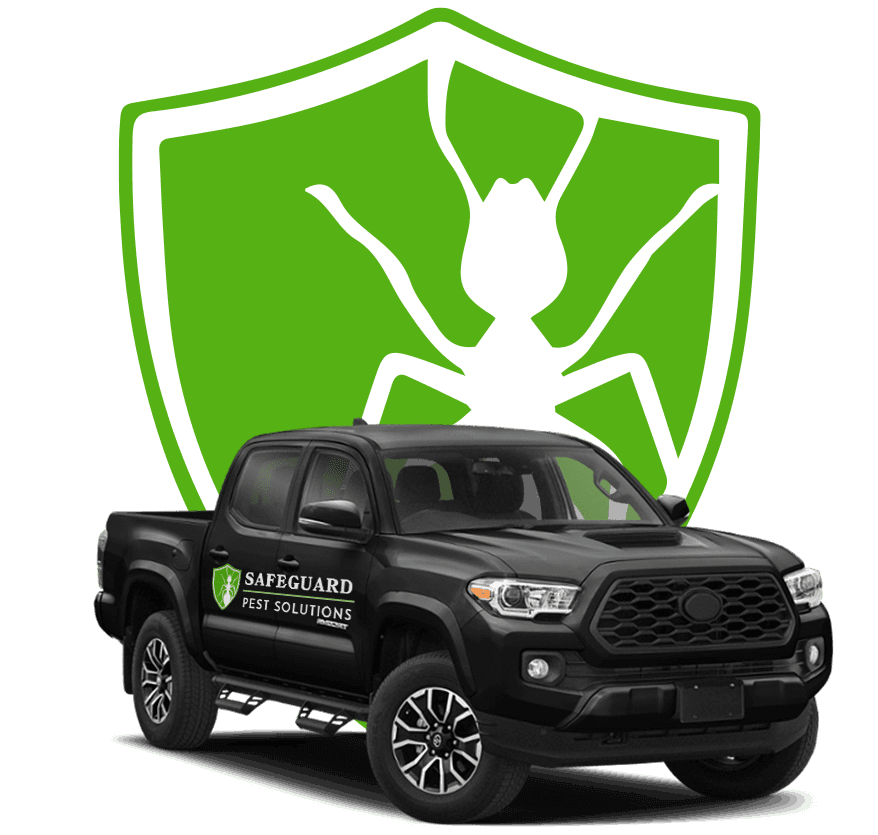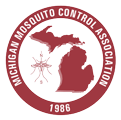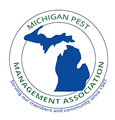
How To Treat Bee, Hornet, & Wasp Stings
.2403141327550.jpg)
Sting Treatment
Wash the sting area with soap and water. This not only removes any dirt but will also disinfect the area preparing it for possible further first aid. The area around the sting will turn red. It will possibly burn a little bit and swell up. Apply a cold compress or ice pack to the affected area to reduce the pain and swelling. For most people, this should be enough to soothe the pain and swelling. The best way to prevent bee stings is to reach out to Safeguard Pest Solutions for pest control in Muskegon, MI.
Why Do Bees, Hornets, & Wasps Sting?
Self-defense
A bee almost always stings in self-defense. Sometimes you may have stepped on or accidentally wandered too close to the hive. Bees, hornets, & wasps almost never sting you unless they are provoked. Oftentimes people think they are being attacked by a bee when in reality the bee is attracted to sweet smells like perfume or cologne, and bright colored patterns on your shirt.
Not all bees have stingers
Many of the large bees you see collecting pollen have no stingers. Worker bees do have stingers and are responsible for most bee stings. They are constantly working on looking for food for the hive. They may see your shirt and think you’re a flower. If you panic and start swatting at it, you’re very likely to get stung! Stay calm. Bees are never out looking for trouble. Casually walk away and try not to act like a threat and the bee will likely fly away.
.2403141327550.jpg)
Bees sting as a form of aggression
When a hive feels threatened they will swarm the perceived threat. Keep your distance if you find a hive in your yard. Make sure children and visitors are aware of the hive and know to keep their distance. Loud lawnmowers and other outdoor tools can also instigate a hive swarm and sting you. If you encounter an aggressive hive seek shelter indoors and reach out to us forhome pest control and commercial pest control in Muskegon, MI!
Common Reactions to Bee Stings

Why Choose Safeguard Pest Solutions?
-
Safe SolutionsYou shouldn’t have to worry that your pest control is more dangerous than the pests in your home. Safeguard Pest Solutions uses natural solutions to safeguard your home from all unwanted pests.
-
Quality ServicesAs a family-owned-and-operated West Michigan pest control company, Safeguard Pest Solutions provides safe, high-quality pest control services administered by licensed and certified service professionals.
-
Satisfaction GuaranteedAt Safeguard Pest Solutions, your satisfaction is important to us. We customize our safe treatments to tackle your pest problems, and our effective pest control guarantees your complete satisfaction.
How to Remove a Stinger
Stay Calm
.2403141327550.jpg)
First, stay calm, seek shelter, and get out of danger immediately. Bees swarm, and you could be covered by dozens of bees very quickly! Once you’re safely away from the danger it’s time to start first aid.
Remove ASAP
Remove the stinger/stingers as soon as possible. Many bees have barbed stingers that fall off and get stuck in your skin. Along with the stinger is an attached venom sack. This venom sack will continue to contract even after being detached from the bee and continue to pump venom into your body. The longer the stinger is in your skin, the more venom is released.
Removal

Treatments
Immediate Sting Treatment
.2403141327550.jpg)
Wash the sting area with soap and water. This not only removes any dirt but will also disinfect the area preparing it for possible further first aid. The area around the sting will turn red. It will possibly burn a little bit and swell up. Apply a cold compress or ice pack to the affected area to reduce the pain and swelling. For most people, this should be enough to soothe the pain and swelling.
Traditional Sting Treatment
After applying a cold compress you may want to take it a step further. There are some traditional medical supplies found in your home to help relieve the pain and swelling. Motrin or Advil are Ibuprofens that act as an anti-inflammatory that will reduce the swelling. Antihistamines like Benadryl or Claritin will not only help reduce the swelling, they will reduce any itching from the sting as well. Finally, you can rub Hydrocortisone Cream or Calamine Lotion on the skin to ease redness, itching, and swelling.
Home Remedies
Aside from traditional medication to treat stings there are a large number of natural remedies for stings. Many of these products are common items found around your house. Homemade sting remedies tend to be passed down from generation to generation, but not necessarily proven medical science.
Baking Soda For Stings
Create a paste using baking soda and water. Apply the paste to the sting area and cover with a bandage for 15 minutes. Re-apply as necessary. It’s said that the baking soda neutralizes the venom. In rare cases, the baking soda can cause minor skin irritations in some people. If that happens, remove the paste from your skin.
Using Honey For Stings
Honey not only tastes great, it has many medicinal properties as well! Rubbing a small amount of honey can lessen swelling. Honey also has a natural antibacterial property that will help curtail any possible infection caused by a sting. Of course, you don’t want to attract any more bees so make sure you apply honey in a safe place.
Apple Cider For Stings
The acidic nature of apple cider vinegar is said to neutralize the venom in stings. There are a few ways you can apply it. Simply pouring it directly on the affected area is one method. If you have a large area covered in stings you may want to soak that area in a basin of AC vinegar. You can also soak a bandage or cloth and apply it to the wound. Because apple cider vinegar is so acidic it may cause minor damage to your skin in some people. If this happens, remove the vinegar and wash the area with soap and water.
Essential Oils And Other Natural Remedies
Many essential oils have antiseptic, antibacterial or antifungal properties. You should always mix your oils with a carrier oil like olive or coconut oil before applying to your skin. Typically you’ll mix 1 part essential oil per 5 part carrier oil. Some people do have allergic reactions to essential oils so be careful when applying them to your skin.
- Witch Hazel is a common remedy for insect bites and stings. It can help reduce inflammation, pain, and itching. You can apply witch hazel directly to the sting as needed.
- Lavender has anti-inflammatory properties that can help reduce the swelling of stings. Be sure to mix this with a carrier oil before applying it to the sting area.
- Aloe Vera is well known for its soothing and pain-relieving properties for your skin. If you have a plant you can simply break off a piece, open the leaf and rub directly on the skin.
- Tea Tree Oil is a natural antiseptic that may reduce sting pain. Mix this with a carrier oil before applying to your skin.

-
 Mud DauberMud Daubers, or Mud Wasps, is a name commonly used to describe wasps that build their nests from mud. The Mud Dauber has 6 legs. It is long and slender with a thin, thread-like waist. Most resemble long slender wasps about .5 to 1 inch (25mm) in length.
Mud DauberMud Daubers, or Mud Wasps, is a name commonly used to describe wasps that build their nests from mud. The Mud Dauber has 6 legs. It is long and slender with a thin, thread-like waist. Most resemble long slender wasps about .5 to 1 inch (25mm) in length. -
 Carpenter BeesOften referred to as Wood Bees, or Wood Burrowing Bees are a common bee found in West Michigan. Carpenter bees are often confused with Bumble Bees.
Carpenter BeesOften referred to as Wood Bees, or Wood Burrowing Bees are a common bee found in West Michigan. Carpenter bees are often confused with Bumble Bees. -
 Honey BeesGiven the off chance that you have undesirable honey bees around your home, you can contact a neighborhood beekeeper who might have the option to eliminate the honey bees without killing them.
Honey BeesGiven the off chance that you have undesirable honey bees around your home, you can contact a neighborhood beekeeper who might have the option to eliminate the honey bees without killing them.

Happy Customers in Your Neighborhood
Proudly Serving West Michigan & the Surrounding Areas
Check out some of our recent reviews!
-
“Jeff was amazing, Came out same day and got me an estimate for a mouse issue I was having. The very next day they came and started the exclusion process. The diligent inspection I got, made the decision easy.”- Chase S.
-
“Friendly staff. Jeff was amazing, guided me on steps that I needed to do before service, and also answered all my questions I had. Would highly recommend them to anyone dealing with any pest issues.”- Clarissa P.
-
“Best customer service imaginable! Jeff and his team worked with us to resolve a difficult infestation in our home. They guaranteed their work and came back several times to make sure we were completely satisfied.”- Nancy S.
-
“Jeff and his team were fast and efficient. They gave me all the information I needed to eliminate the problem. They were professional and courteous. I would absolutely recommend them.”- Rebekah
Safeguard Pest Solutions Blog
Want all the latest news or updates? Browse through our blog to read our most recent posts and featured articles.
.2403141335550.jpg)
.2403141335550.jpg)
.2403141335550.jpg)




